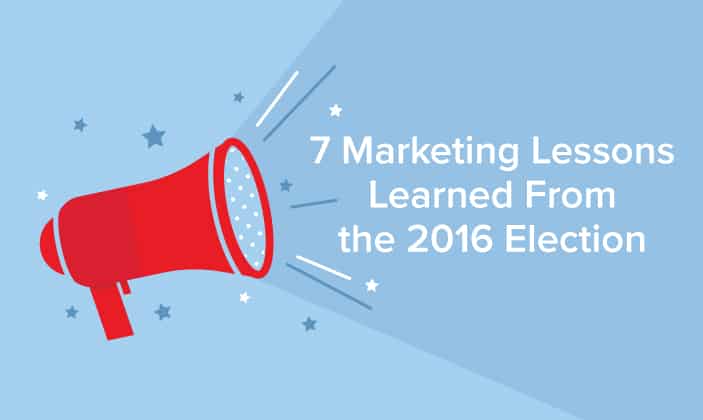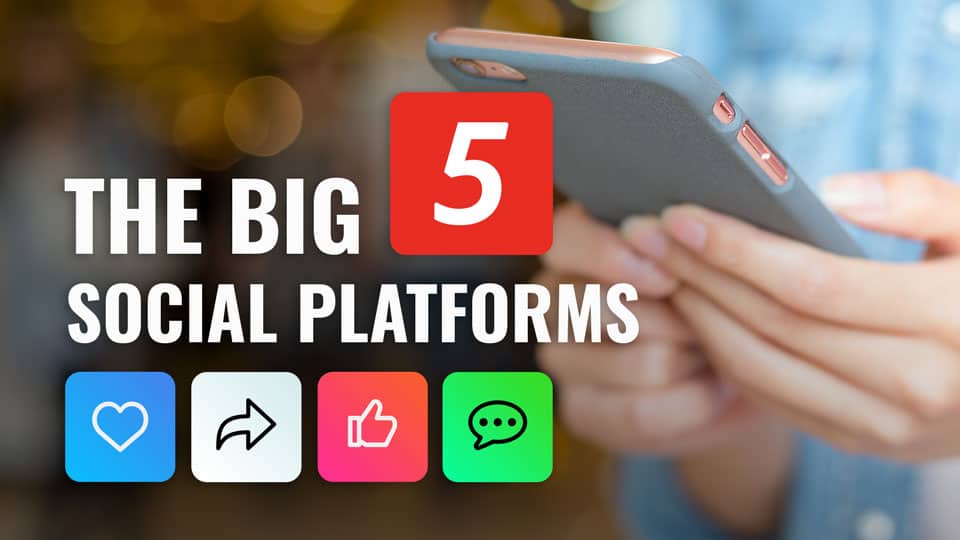In honor of Election Day, Here are Seven Marketing Lessons from the 2016 Election to Launch Your Business to the Next Level.
In the realm of politics, it’s all about branding yourself to get votes. It’s a giant game of marketing Jenga with candidates making strategic moves to stay balanced and grow audiences. Marketing a business works in much the same way and with political messages constantly being blasted across TVs and Facebook feeds around the world, companies are provided with the opportunity to learn from candidates’ mistakes and successes on a large scale.
The 2016 United States Presidential Election has provided businesses with a chance to not only learn from the current candidates’ use of social media and personal branding, but also from the buzz that grew around them.
A major breakthrough in this campaign season has been the overwhelming use of social media by candidates, parties, and audiences. So as a business, what can you learn from this election? In honor of Election Day, here are seven marketing lessons from the 2016 Election that can help take your business to the next level.
7 Marketing Lessons Learned from the 2016 Election
Lesson 1: Target Your Audience
You’re not going to find Hillary Clinton committed to campaigning in traditionally Republican states or Donald Trump in traditionally Democratic states. They know their messages will make the most impact in their aligned states or in swing states where they have the chance to change opinions.
Similarly, why would you market on Snapchat if your target audience is mostly on Facebook or target men if you trying to sell to women? Some people will never vote for a certain party just like some people will never fit your brand. The important thing is knowing who your audience is and then targeting them accurately and with gusto.
Follow in the steps of these audience-focused candidates and refine your target market. Don’t waste your time marketing to someone who will never be your supporter when you can be putting all that energy into the perfect audience.
Lesson 2: Be Emotional
I don’t mean cry to your audiences but tap into the emotional side of your business. People buy into the ideas and products of a company based on the emotion they feel toward it then back up those decisions with logic.
In this particular election, the candidates used emotional and passionate speech to entice audiences, providing them with causes they wanted to stand behind. In a business, it’s important to follow this rhetoric to encourage audiences to back your brand.
A brand that does this particularly well is Tom’s. The shoe company donates one pair of shoes to less fortunate children for every one pair they sell. They are successful because they tap into the public’s emotional side.
Lesson 3: Simple Works Best
“Make America Great Again.” “Stronger Together.” These are simple slogans that audiences can understand and support. It’s their rally cries that they can scream to show support. Using simple slogans and ideas to talk about your business is an effective way to appeal to a mass market.
Complex messages that require extreme in-depth thought may leave your audience confused and looking elsewhere. Instead, use a simple message that is easy to understand and helps you stand out from the crowd.
Lesson 4: Social Media Can Be Your Friend Or Foe
There are many unspoken rules to social media that presidential candidates and businesses alike don’t understand. Leading up to the election candidates seem to post too quickly, putting their foot in their mouth and having to return to apologize to audiences later down the road.
Avoid this by planning out your posts and truly thinking them through. Will they offend your audience? Will it make you seem unprofessional? Limit what is allowed on your business’ social media and who is allowed to use the accounts.
Only a limited number of people should be permitted to speak on behalf of the business and even they should be monitored. If used correctly, social media is a great way to connect to your audiences with two-way communication and even reach new audiences.
Lesson 5: Subject Lines Matter
Email marketing is far from dead and the first thing you can learn from this election’s use of email marketing is that subject lines matter. In their campaigns, both Trump and Clinton have used email marketing effectively in connecting with their supporters.
For example, Clinton successfully uses information gaps in her email subject lines, leaving people wanting to know more. One email used the subject “Dinner with Bill?” It piqued people’s interests and convinced them to click because they were unsure of the context and had to find out more.
Experiment with subject lines such as this in your business’ email marketing campaigns. Learn what gets the most clicks and responses from your audience.
Lesson 6: Take Advantage of Free Media
Social media provides businesses and candidates alike with the unique advantage of free media in a world of pay-to-play platforms. Just looking down your social media newsfeed you’ll notice that almost every other post has something to do with this election.
Whether you are reading a tweet update from the New York Times or laughing at a meme (a funny viral image joke) that Cousin Erica put on your timeline, talk of the election is everywhere. The current campaigns understand and embraced this form of “free advertising” by starting conversations online and by joining in on other conversations.
As a business, remember that not every part of your marketing plan has to cost you money in an obvious way. Start conversations on social media or send press releases out to newspapers to gain awareness for your brand.
Lesson 7: Use Hashtags
Speaking of starting conversations, hashtags are tools that can sometimes stand our more than some of your most thought out marketing materials. A hashtag is a word or phrase starting with a pound sign (#) used on certain social media platforms to group and identify messages on a specific topic.
During the Republican and Democratic National Conventions, the expensive marketing materials didn’t have nearly the reach that the hashtags showing up in social media posts did. This is probably because hashtags provided audiences with a way to interact with the convention no matter their location.
Use short but memorable hashtags in your business marketing efforts to make messages stick with your audiences. During the debates, Twitter announced it’s official #Debate hashtag. During the October 9 townhall style debate, over 17 million tweets were posted as part of the conversation.
The hashtag, #Debate, was tweeted at a rate of 51 times per minute. Hashtags are memorable and concise and lead to true interaction between audiences. Audiences and businesses alike can use them to join in on conversations.
For a business, this means not only getting free advertising using online communication but also connecting you to your audience on a personal level. Talk of the 2016 United States Presidential Election is everywhere we look. If it teaches us anything, it is how significant social media and marketing is for your business.
Instead of just watching from the side, learn from these debates and advance your business.
Hailey Johnson is a senior at LSU studying Mass Communication. If she is not binge watching Netflix, you can find her catching up on trending social media topics or day dreaming about traveling. She enjoys short walks on the beach and obsessing over pop culture.
Work with Catapult Creative Media Inc. Catapult Creative Media Inc. is a digital marketing and design agency serving clients over the United States but is proud to call Baton Rouge, Louisiana home. Founded in 2007, Catapult provides digital, social and mobile marketing solutions backed by relevant strategy and measurable results. Catapult works the web to their clients’ advantage, launching them to their next level of success.



